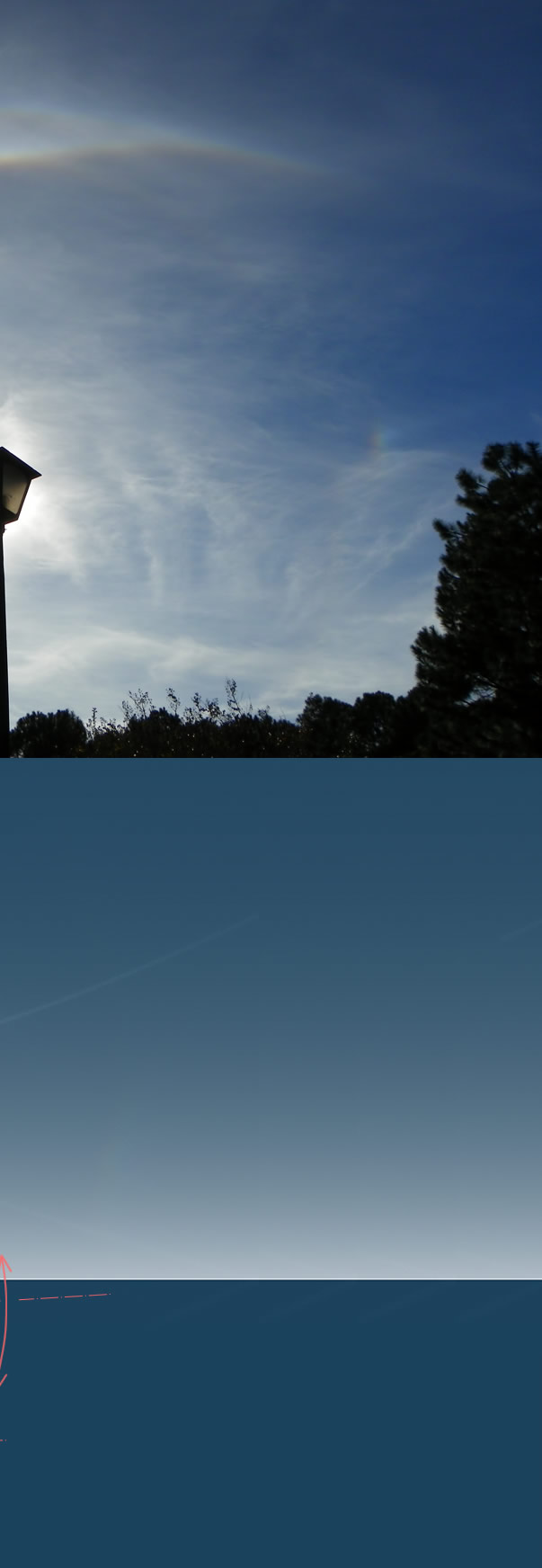|
 |
| Florida Rare Halos Nick Beck caught this high cloud multiple halo display in Florida on 12th November. It helps demonstrate that fine halos can be seen anywhere on the Planet and not purely in Polar regions or during very cold weather. ©Nick Beck, shown with permission |
|
 |

| About - Submit | Optics Picture of the Day | Galleries | Previous | Next | Today |
| "Yesterday [Saturday Nov 12] I observed a great display with 14 halos! I was walking around downtown Jacksonville and noticed a band of cirrus clouds on the horizon. I had an odd feeling they would make good halos, and I was right. At first it made a weak sundog, and some segments of the parhelic circle. Then it produced an upper tangent arc [almost a circumscribed arc as the sun was 28° high] and 22 degree halo, and perhaps a Parry arc. However, when I was back home the display really escalated. A good parhelic circle nearly all the way around the horizon, both 120 degree parhelia and 22 degree parhelia (sundogs). There was a splendid upper tangent arc and a Parry arc and in between them, a faint Lowitz arc! I looked at the sky with a convex mirror and there was also a Wegener arc, both sides of the sky, and even a 46 degree halo and both infralateral arcs. Then a faint circumzenithal arc appeared above the large halo. Later the circumzenithal arc reappeared with a supralateral arc. This was a great day to end a drought of good halos! "  The upper Lowitz arcs curving upwards, crossing the upper tangent arc and touching the Parry arc are a rare sighting. We have no photographs of Lowitz arcs before the 1980s and their very existence was disputed. They are traditionally searched for around the sundogs but the region between the upper tangent (UTA) and Parry arcs might be more fertile ground (sky). Lowitz arcs localised near the UTA could arise from specially oriented hexagonal column crystals rather than plates. The HaloSim ray tracing simulation at left used 'Parry oriented' columns that were then allowed extra freedom by being allowed to rock 15� (standard deviation) about a �Lowitz axis� passing through the crystal perpendicular to the prism axis and two face edges. Limited rotational positions around the Lowitz axis constrain the visibility of the arc to its upper region. There is another explanation - had the halo forming cloud been more uniform and extensive then Lowitz arcs formed by the traditional plate mechanism might have extended down to the sundogs. |